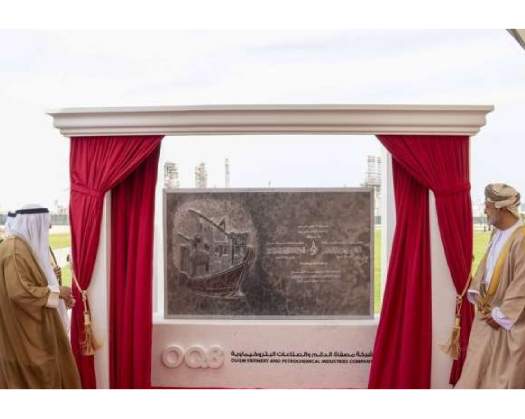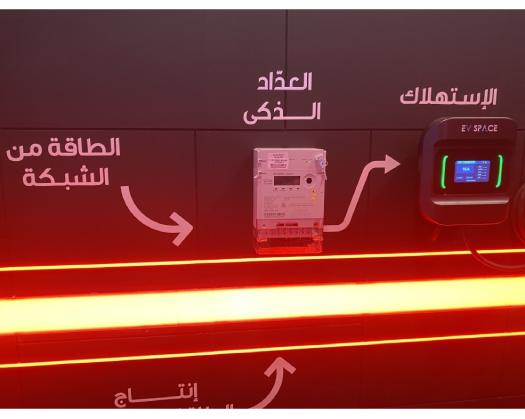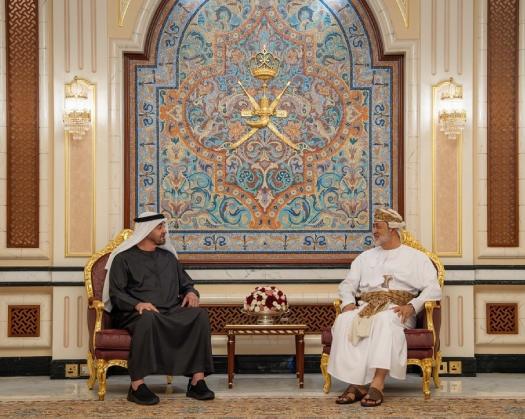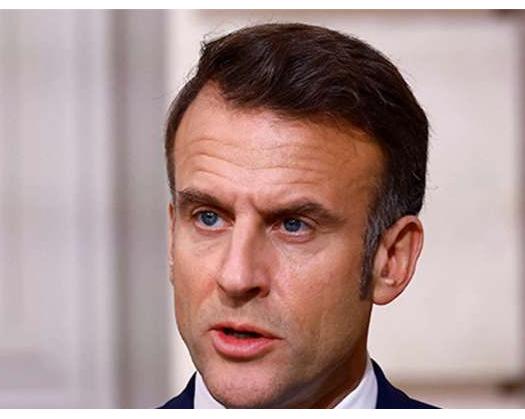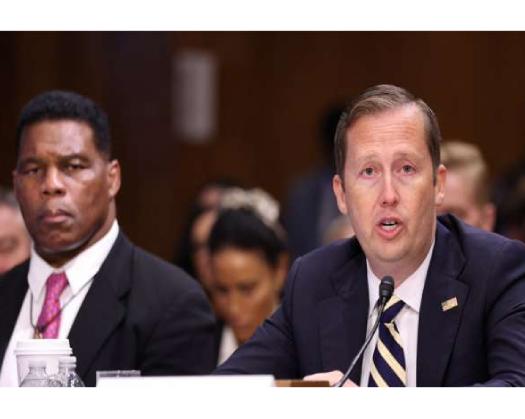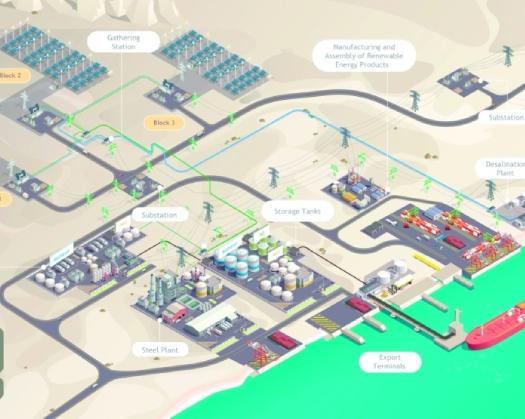Muscat: Since the accession of His Majesty Sultan Haitham bin Tarik, the Omani economy has experienced significant growth, driven by initiatives aimed at diversifying the economy, increasing non-oil revenues, and broadening the economic base. These initiatives have played a crucial role in bolstering GDP growth, attracting investments, and energizing the private sector.
To restore financial equilibrium between revenues and expenditures in the medium term and to mitigate financial deficits in the national budget, the government has introduced a medium-term plan (2020-2024). This plan encompasses various financial strategies and policies designed to foster economic growth, diversify government revenue sources, optimize and enhance the efficiency of government spending, strengthen the social protection framework, and improve public finance management.
The government's commitment to executing this plan has laid a solid foundation for achieving financial sustainability and ensuring long-term fiscal stability. Building on these efforts, the National Program for Financial Sustainability and Financial Sector Development (2023-2025) aims to cultivate a dynamic, robust, and innovative financial sector that offers a range of financing solutions to targeted groups, thereby facilitating economic growth and promoting balanced, sustainable development led by the private sector.
The Omani private sector plays a pivotal role in driving economic development and GDP growth across various sectors, particularly those essential for economic diversification. The private sector is increasingly supporting initiatives that seek to enhance the national economy by capitalizing on opportunities presented through incentive programs, such as the National Program for Private Sector Development and the Foreign Trade “Nazdaher” initiative, as well as other financial sustainability initiatives, while also fostering partnerships with the government sector.
Numerous strategic initiatives have been executed across various governorates in the Sultanate of Oman, notably including the Duqm Refinery Project and the petrochemical industries within the Duqm Special Economic Zone. Other significant projects include the Central Market for Vegetables and Fruits, known as “Silal,” located in Khazaen Economic City in the Wilayat of Barka, as well as the Fish Canning and Value-Added Complex in Duqm. Additionally, several projects focused on renewable energy have been launched.
In terms of public debt in the Sultanate of Oman, there have been favorable developments due to the implementation of various government measures and initiatives aimed at optimizing and enhancing spending efficiency, alongside an increase in non-oil government revenues and a rise in oil prices. Consequently, the public debt balance has decreased to approximately RO 14.4 billion, representing 34 percent of GDP by the end of 2024, down from RO 19.8 billion, or 67.9 percent of GDP, at the end of 2020.
Concerning the credit rating of the Sultanate of Oman, there has been a significant improvement in ratings from major international agencies between 2021 and 2024. This enhancement is largely due to rising oil prices, the implementation of financial performance control measures, and initiatives outlined in the medium-term financial plan, which have collectively reduced public debt risks and bolstered financial and economic performance.
Standard & Poor’s upgraded its rating from (+B) in 2020 to (BBB-) with a stable outlook in 2024, thereby reinstating the country’s investment appeal. Similarly, Fitch improved its rating from (-BB) in 2020 to (BB+) with a positive outlook in 2024, while Moody’s elevated its rating from (Ba3) in 2020 to (1Ba) with a positive outlook in 2024.
The economic and financial indicators of the Omani economy have demonstrated significant growth over the past five years. In 2023, the GDP at current prices reached approximately RO 40.7 billion, surpassing the average target of around RO 29.5 billion set for the tenth five-year development plan (2021-2025) by 38 percent. This growth is primarily driven by oil activities, which expanded at an average rate of 27.8 percent, alongside non-oil activities that grew at an average rate of about 6.2 percent during the period from 2021 to 2023.
Both oil and non-oil sectors outperformed the average growth targets established for the plan years, which were approximately 5.5 percent and 5.7 percent, respectively.
The increase in growth can be attributed to a rise in the average price of Omani crude oil, which reached about $80.7 per barrel during 2021-2023. This represents a 75.4 percent increase compared to 2020 prices and a 68.1 percent rise over the average oil price of $48 per barrel set for the plan years. Additionally, the recovery of economic activities from the pandemic's impact, facilitated by various policies and initiatives implemented by the Sultanate of Oman, has played a crucial role in this growth.
Consequently, the average per capita GDP at current prices rose by approximately 7.1 percent, reaching around OMR 8,000 during 2021-2023, compared to RO 6.5 thousand in 2020. This figure also exceeds the targeted average of RO 6,000 for the plan years.
In the first nine months of 2024, the GDP at current prices experienced an increase of approximately 2.7 percent compared to the same timeframe in 2023. This growth was driven by a 4.2 percent rise in non-oil activities, alongside a modest 0.3 percent increase in oil activities. Contributing to this trend was a 3.5 percent rise in the average price of Omani crude oil, which reached 82.6 US dollars per barrel, up from 79.9 US dollars per barrel in the corresponding period of 2023.
The government’s economic forecasting team anticipates a nominal GDP growth of 3.4 percent for 2025.
Additionally, the GDP at constant prices rose to approximately RO 37.7 billion in 2023, surpassing the planned average target of around RO 30.98 billion for the years 2021-2025. The average growth rate from 2021 to 2023 was 3.9 percent, exceeding the targeted average growth of 3.5 percent for the same period.
This growth was primarily attributed to a significant increase in non-oil activities, which averaged about 4.2 percent, along with a 3.9 percent rise in oil activities during the 2021-2023 period. Both sectors outperformed the average growth targets set for the plan years, which were approximately 3.2 percent for non-oil activities and 3.5 percent for oil activities.
By the end of September 2024, the GDP at constant prices had grown by 1.9 percent compared to the same period in 2023, driven by a 4.2 percent increase in non-oil activities, despite a 2.8 percent decline in oil activities. This growth occurred even with a 5.1 percent reduction in average daily oil production during the first nine months of 2024, which fell to 994,000 barrels from 1.05 million barrels in the same period of 2023, highlighting the recovery in non-oil activities.
The government’s economic forecasting team also projects a real GDP growth of 2.7 percent for 2025, while the International Monetary Fund estimates a 3.1 percent growth in GDP at constant prices for the same year.
The total investment rose from approximately RO 7.97 billion in 2020 to RO 10.9 billion in 2023, reflecting an average growth rate of 11.7 percent from 2021 to 2023. While this growth matched the GDP increase, the investment-to-GDP ratio during this period remained consistent with the 2020 level of 27.3 percent, surpassing the target rate of about 26.5 percent set for the plan years from 2021 to 2025.
In terms of the private sector's share of total investments, it averaged around 49.3 percent during 2021-2022, which is still below the targeted 60 percent for the plan years 2021-2025. This indicates a need for enhanced efforts to strengthen the private sector's role in economic activities and help it achieve the desired contribution to total investments.
The average inflation rate, as indicated by the consumer price index, was approximately 1.7 percent from 2021 to 2023, a notable increase from the negative inflation rate of 0.4 percent recorded in 2020. This suggests that inflationary pressures have remained stable and within acceptable limits.
Furthermore, the average inflation rate achieved is lower than the target average of 2.8 percent outlined in the plan. This is attributed to ongoing efforts by global central banks to control inflation, along with government initiatives aimed at mitigating inflation, such as maintaining fuel prices at October 2021 levels and supporting essential food items. The inflation rate decreased to about 0.6 percent from January to November 2024, compared to 1 percent during the same timeframe in 2023.
Monetary and banking indicators showed significant improvement during the recent phase of the Tenth Five-Year Development Plan. Local liquidity rose by an average of 7.7 percent from 2021 to 2024, reaching RO 24.8 billion by the end of October 2024, up from OMR 19.3 billion at the close of 2020. Additionally, total deposits within the banking sector increased by an average of 8.1 percent, amounting to RO 31.9 billion at the end of October 2024, compared to RO 24.2 billion at the end of 2020. The total credit extended by banks in the Sultanate of Oman also saw an average increase of 4.6 percent, reaching RO 31.9 billion by the end of October 2024, up from RO 26.7 billion at the end of 2020.
Conversely, the Muscat Stock Exchange index experienced an average rise of 5.4 percent, reaching 4563 points at the end of October 2024, compared to approximately 3659 points at the end of 2020.
The current account in the balance of payments demonstrated notable improvement during 2021-2023, achieving surpluses of RO 2.2 billion and RO 1.01 billion, representing 5 percent and 4 percent of GDP in 2022 and 2023, respectively. This is a significant turnaround from a deficit of RO 4.8 billion, or 16.5 percent of GDP, recorded in 2020 and 2021.
This positive trend is primarily attributed to the increase in oil prices during 2022 and 2023 compared to 2020 and 2021, which boosted the value of oil exports and heightened demand for non-oil exports from key trading partners. The current account's performance surpassed its targets by achieving surpluses of 5 percent and 4 percent of GDP in 2022 and 2023, respectively, in contrast to a targeted deficit of 5.5 percent of GDP by the end of the plan.
The trade balance demonstrated notable improvement from 2021 to 2023, with a significant increase in surplus averaging 104.4 percent, reaching OMR7.8 billion, or 18.6 percent of GDP in 2023, compared to OMR1.5 billion, or 5.1 percent of GDP in 2020. This enhancement was driven by a 26 percent average growth in commodity exports and a 12 percent rise in commodity imports.
This positive trend can be attributed primarily to the recovery in crude oil prices and the resurgence of economic activities. It is important to highlight that while the share of non-oil exports in total commodity exports rose to approximately 32.8 percent in 2023 from 28.1 percent in 2020, oil exports continued to dominate, accounting for 61 percent of total commodity exports in 2023.
From January to October 2024, the trade balance surplus further increased by 3.4 percent, reaching around OMR6.6 billion. This growth was fueled by an 8.7 percent rise in commodity exports and an 11.4 percent increase in commodity imports, indicating an improved trade balance performance compared to the same period in 2023, largely due to rising oil prices.
In terms of foreign direct investment, the cumulative value at the end of 2023 stood at approximately OMR25.4 billion, up from OMR14.3 billion at the end of 2020, reflecting an average growth rate of 21.3 percent during the 2021-2023 period.
Foreign direct investment inflows in 2023 reached about OMR4.8 billion, a significant increase from OMR900 million in 2020, representing an average growth of 121 percent over the 2021-2023 timeframe.
Efforts to enhance the business and investment climate continue, focusing on providing incentives to attract and localize investments through various initiatives. Key among these are the Private Investment Attraction Program and the Investor Residency Program.
From 2021 to 2023, foreign direct investment flows averaged 9.5 percent of the gross domestic product at current prices, nearing the target rate of approximately 10.9 percent set for the end of the plan.
In 2024, the total value of foreign direct investments reached around OMR26.7 billion, with inflows of about OMR3.9 billion compared to the same period in 2023.

